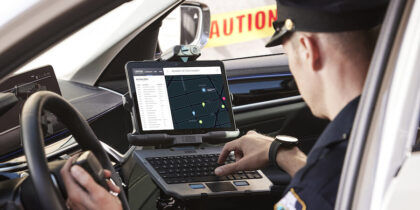As technology becomes more pervasive in daily life, ordinary citizens are looking to government to use the same tools to meet the growing demand for increased transparency.
When it comes to using technology to drive open (or transparent) government, citizens have so far been less than impressed by what they’ve seen, according to the Pew Research Center’s study, “Americans’ Views on Open Government Data.” Just 7 percent of respondents said local governments share their data very effectively, and only 19 percent could think of an example where the local government did a good job providing information to the public about data it collects.
Despite such dim assessments of progress thus far, numerous municipalities have stepped up with technology implementations that move in the direction of greater government accountability.
Much of the progress to date hinges on better management of data through open data solutions. In this vision, government employs a mix of current technologies and novel regulations to ensure that civic data can be used, reused and redistributed freely. In terms of regulations, this means cities and states explicitly permit the use of public data. In terms of technology, open data involves a high degree of automation, with data organized in a machine-readable, standard format and accessible to computer applications.
Among advocates of open government, the term open data is often mentioned in the same breath as big data, and in some ways they are two sides of the same coin. Governments generate mass amounts of data, from vital statistics to drivers’ licenses to land records. Open government typically relies to some degree on the storage, processing and analytic techniques of big data to make this mass of information more transparent and accessible.
Using Mobility to Get Involved in Local Government
Sometimes transparency means simplifying interactions with the city via mobile technology already widely in use. For example, Shawnee, Kansas’ Shawnee Connect app allows citizens to tap into the city’s social media presence, submit service requests and apply for various permits, all through the app. Users then receive updates when issues have been addressed.
Technology can also help citizens participate more actively in municipal governance through methods such as crowdsourcing. Driven by powerful connectivity tools, this public fundraising mechanism is increasingly becoming an access point between neighborhoods and government as residents come together, often through their mobile devices, to raise funds for everything from social programs to public parks.
New Technology Fosters Government Transparency
In some cases, openness can have a very specific connotation beyond the general accessibility of services. Transparency may mean the ability to see into particular areas of government, such as financing.
Typically, questions concerning where government money comes from and how it’s spent have been difficult to address both within government and externally. Citizens have found government accounting systems frustratingly opaque, with information difficult to access and understand. But new advancements in technology are helping to change that. Citizens now have direct access to lines and expenditures across departments through online accounting systems that make the government checkbook accessible in clear and simple terms.
In other cases, technology has opened a window into the inner workings of government, giving citizens insight into how key decisions are made and policies drawn up. One example of this is California’s Digital Democracy implementation, an online platform that offers remote access to a database of state legislative committee activity, including the ability to search transcripts and videos by keyword, topic, speaker, organization or date, even giving access to participants’ positions and donation and gift histories.
Mobility has been a particular hallmark of emerging open government technology initiatives. For many citizens, access to information on the go has become an expectation in both their personal and professional lives. As cities and states move to open the doors of the data vault via innovative technologies, mobility has been and will continue to be high on the list of priorities.
If governments use the right mobility solutions, they can effectively share data without comprising security. Find out more about how mobile platforms can benefit both governments and citizens.







